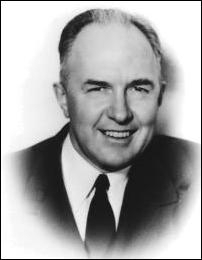Karcher, John Clarence
John Clarence Karcher (1894-1978), an American engineer working for the United States Bureau of Standards who developed the "seismic reflection" method of seismic exploration, independently of German scientist Ludger Mintrop. The seismograph, an instrument that measures the intensity of blast-induced underground vibrations, would become a revolutionary tool in oil exploration. In 1921, on a farm outside of Oklahoma City, Oklahoma, Karcher tested the seismograph in the first seismic survey and determined that it could detect subsurface structures capable of holding oil. With renowned oil man Lee Everette DeGolyer, he opened the world's first well ever to be successfully drilled into a structure located by reflection seismography in 1928.
Further Reading
John Clarence Karcher (Handbook of Texas Online)
Seismograph History (Oklahoma Historical Society)
